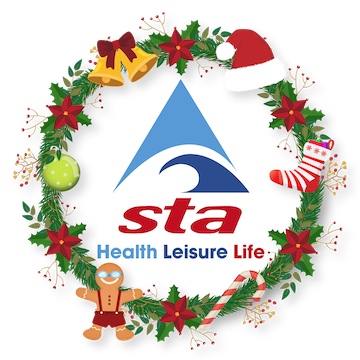Teaching Adults Facebook Q&A
If you were unable to join our Teaching Adults Facebook Q&A chat with our Aquatic Technical Team on 10th November, you can catch up on everything that happened here.
Here are the questions posted, with the technical team’s answers:
Under the Award system can ‘beginners’ teachers – or the new qualification teach adults beginners providing correct supervision is there?
Yes, the STA Level 2 Award in Teaching Swimming qualifies the holder to teach up to 10 beginner learners, this covers adult learners. The STA Award course looks at how to teach and develop beginner learners of all ages. They would need the appropriate safety cover as well.
Should I teach in the water or on the poolside?
STA would recommend teaching in the water as adults often need more manual support. As the adult learner progresses, the manual support will be reduced. STA recommends adults are taught in chest depth water as the deeper water assists with buoyancy. This will often need to be explained to learners, as they want to stay in the shallower water.
Should I teach on a 1-to-1 basis or groups lessons?
Adults benefit from 1 on 1 lessons or in a small class as individual teacher support and advice is needed. When teaching in the water a maximum ratio of 1 teacher to 6 learners must be adhered to with appropriate safety cover on poolside. Adults enjoy the social aspect of a group lesson and will often support each other throughout the lessons. A very nervous adult would need 1 on 1 support until they became safe in the water and had been taught how to regain their feet.
Are there any medical issues I need to consider?
It is important to find out the adult learner’s medical information, past experiences and any past injuries that may affect their swimming ability. This will ensure you as a teacher can teach them within their limits and plan achievable steps for them to complete. Teachers should be aware that adults who have had a hip replacement must not swim breaststroke unless GP approval has been seen and due to adults holding their head out of the water for long periods of time there is a risk of neck problems.
What are the main skills I need to teach to a beginner adult?
- Confidence of being in the water
- Regaining feet prone and supine, knowing how to stand up helps give learners confidence (this is a vital skill which is often forgotten)
- Treading water – this helps an adult feel safe when swimming in the deep end and if they are swimming in a straight line, when another swimmer comes towards them they need the ability to stop, tread water before changing direction
- Rotating from back to front and vice versa
- Relaxation and floating
- Exhaling in the water
- Stroke stability.
What stroke should I teach?
Due to injuries, age or medical reasons some adults struggle to achieve the full movement or rotation needed for certain strokes. Therefore strokes may need to be adapted/tailored to suit each learners’ needs. When beginning it is recommended to teach an alternating leg action and a breaststroke leg action; by experiencing both leg actions learners can find which one they are most comfortable with. Within the lesson teachers may be teaching different strokes.
I have real trouble getting adults doing proper breathing techniques, any tips? Also floating, I’ve had a few men whose legs just don’t seem to float at all, again any tips?
How advanced is your learner? I would recommend going back to basics and looking at water confidence practices such as face in the water, picking up submersibles, blowing bubbles as often adults will ‘forget’ to breathe or hold their breath so recapping confidence practices. I would then look at using a woggle behind their back, holding the ends in front, so they have space in between the woggle ends to put their face, and they put their face in the water, count to 3 and turn to the side to breathe so they start to create a rhythm. They can be standing in the water and with confidence they can use a flutter kick over a short distance. They have the woggle for support and are only focusing on their breathing before adding the legs as well.
Due to how a body is made up a lot of men often have this problem; able swimmers or beginners. Try using 1/2 woggles of a woggle and a float, ask the learner to relax, head back and try to concentrate to keep those legs up. Try floating on the front as well as with the face in the water – does this help? Some people with find it harder to float and will not achieve that flat floating position.
If you would like more information on teaching adults, STA has an online CPD on teaching adults and upon completion of the CPD you will have access to a scheme of work for nervous non-swimmer adults, beginner adults and advanced adults.
- Categories
- Community, Swimming Teaching

